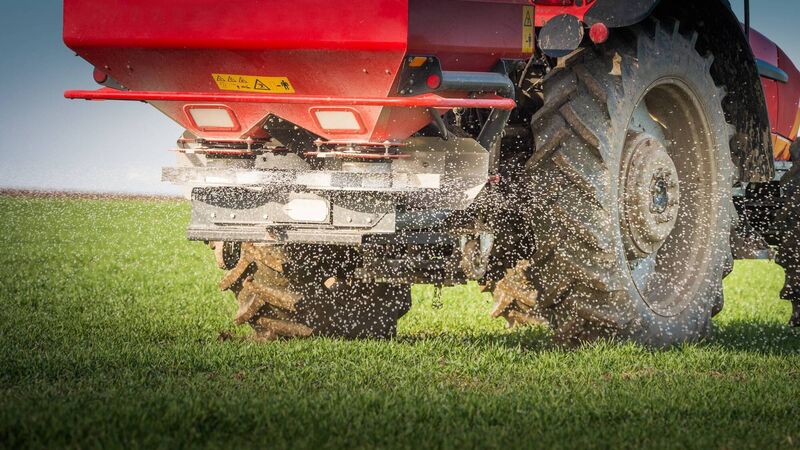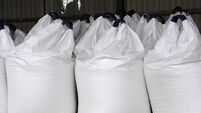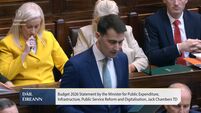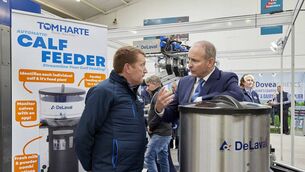While some experts stress it is “vital” a lower emissions reduction target of 22% is set for agriculture “in recognition” of its economic and social importance to Ireland, others have warned that the lower the figure for agriculture, the greater the “burden” that falls on the rest of society.
The Climate Action and Low Carbon Development (Amendment) Act 2021 commits Ireland to a legally-binding target of a reduction in emissions of 51% by 2030.
The Climate Action Plan 2021 has proposed a target for agriculture to reduce emissions by 22% to 30% by 2030.
According to the Irish Farmers’ Association, a lower target for agriculture will “recognise the sectors’ unique ability to remove carbon from the atmosphere by carbon sequestration through enhancing carbon sinks and reducing carbon losses, as well as offset emissions in other sectors through on-farm renewables”.
IFA deputy president Brian Rushe told the Oireachtas joint committee on environment and climate action during a recent series of discussions on the proposed carbon budgets that it is important a reduction target set for agriculture is “achievable and empowers and supports farmers to make the necessary changes”.
“A reduction target of 22% for agriculture is extremely challenging but achievable,” he said.
“The lower target would also recognise the social and economic importance of the sector, as well as the vulnerabilities and technical challenges faced by the sector.
“Climate change is arguably the greatest challenge facing the world today, with farmers very much on the frontline.
“Irish farmers understand they have a unique role to play in meeting the climate change challenge. They are committed to playing their part in reducing greenhouse gas emissions.
“However, this must be done in a fair and balanced way.”
He told the committee that when measures are introduced to reduce emissions on many farms, “those measures will, by and large, have a cost”.
“Nearly everyone will be aware that many farms are in an economically vulnerable place,” he said.
“Farmers are the weakest link in the supply chain. We do not have an ability to pass on that additional cost to other actors in the supply chain. That cost is absorbed by the farm and it hits and hurts farm income.
“We need to make sure we do not leave farmers behind; that we properly support and bring farmers on the journey and offer them opportunities, if those are available.”
Changing practices on-farm
He added that “no person or sector is immune to change”, and that farming is no different.
“We are changing our practices on-farm, fertiliser use, animal genetics, because we want to stay in business,” he continued.
“We want to continue to contribute to our economy and towns and villages throughout the country. If I wanted to be a millionaire, I would do something else, but I do not. I want to be a farmer.
“I want to produce food and contribute to the social sustainability of the country, because that is what I and most farmers believe in.”
Emeritus Professor John Sweeney told the committee that a 33% reduction in emissions from agriculture, for example, means that the rest of society “will be expected to bear a heavier burden” of an approximate 60% reduction.
“That is quite a considerable reduction to anticipate in the course of 10 years. If we get a 15% reduction in agriculture, the rest of society will have to burden itself with an 80% reduction,” he said.
“If we went down to 10%, which is quite close to what we are seeing in some of the Food Vision 2030-type documents at the moment, the burden becomes very heavy and really impractical for the rest of society.”
At the recent UN Climate Conference, COP26, Ireland signed up to a proposed reduction of 30% in methane emissions by 2030.
“Some 70% of the world’s economy is now committed to this reduction. We have not heard Ireland state this is what it is going to do. I wonder why that may be the case,” Mr Sweeney said.
“Do we really expect the rest of the world to carry our burden once again?
“If we were to reduce agricultural emissions by 33% and if, as part of that, we were to reduce methane emissions only by 10%, a figure that corresponds to what is being offered in Food Vision 2030, the reality is that the rest of agriculture — and that is a very significant amount of agriculture — would have to face a 77% reduction.
“There are intrasectoral divisions and issues of just transition that will be significant if we are not willing to bite the bullet on a larger scale.
“The conclusion one may draw is that only an immediate policy change, rather than waiting for the next carbon budget, to ensure significant near-term and ongoing reductions in methane can protect livestock agriculture in the first instance and, second, the rest of agriculture, from far more onerous and less planned mandatory and very rapid emissions reductions that will be required to meet those budgets.”
He said in the short-term, a commitment is needed “that we will reduce our national herd and make an ongoing reduction in our methane emissions of at least 3% annually”.
“If we can reduce these emissions by 3% per year, we will not then add too much in the long term to the burden of climate warming due to methane emissions,” he said.
“We must, however, put that aim into practice.
“There should certainly be no question of an increase in our cattle numbers, and a reduction is imperative if we are to realise any of these carbon budgets.
“Teagasc’s roadmap for 2027 envisages something like 200,000 more cows, which sees an increase of 19% and an increase in the average herd size to 100.
“That is not compatible with any of our carbon budget targets. That has to be tackled at source.”
Nitrogen is 'the driver'
Mr Sweeney said that there is also a significant need for a limit on nitrogen use - because “it is the driver”.
With the Climate Action Plan outlining a target of reducing chemical nitrogen to a level of 350,000 tonnes by 2025, with a further reduction to an absolute maximum of 325,000 tonnes by 2030, he posed the question: “Why not bring that date forward to 2022 or 2023?”
“Why not limit and throttle the overuse of fertilisers, which is now causing so much damage to the quality of our lakes and rivers?
“There is also an issue in terms of things that we do not tax. I have been very surprised that I cannot find any other EU country that does not tax nitrogen fertilisers. That would have a significant effect on making more efficient use of fertilisers.”
The Department of Agriculture’s chief inspector Bill Callanan confirmed to the committee that the initial five-year carbon budget from 2021 to 2025 for agriculture will focus on reducing the use of chemical fertilisers.
The series of carbon budgets being considered was proposed by the Climate Change Advisory Council last year. A carbon budget represents the total amount of emissions that may be emitted in the state during a five-year period.

Unlimited access. Half the price.
Try unlimited access from only €1.25 a week
Already a subscriber? Sign in










